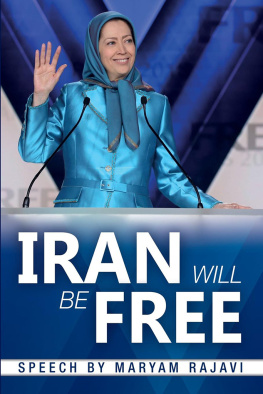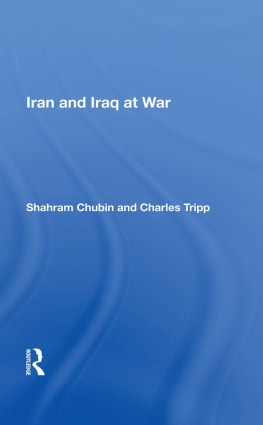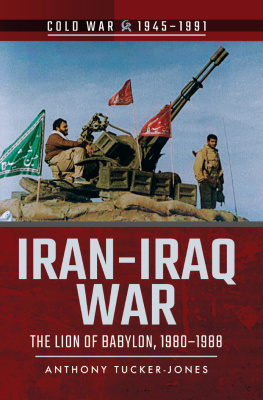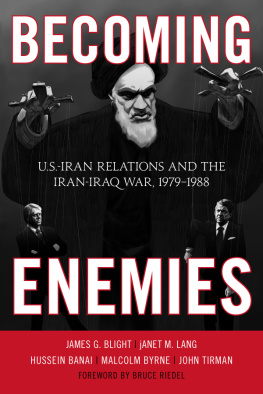
Unburied Memories
Today, almost a generation has passed since the IranIraq war and the memory of it is set to diminish with each passing generation. The following questions emerge. Can we say that the gradual disappearance of wars memory means that, increasingly, Iranians will see the IranIraq war solely as an historical event? How can we defend or reject this idea? Today, with which elements and values should we look at the IranIraq war memorials and ceremonies? To what extent will war museums and materials culture be influenced by these new values?
In the period during and immediately after the IranIraq war (1980-88), national bereavement and commemoration of martyrs was neither apparent in common state policy nor a social need. Even at the turn of the 21st century, anyone walking through Iranian cities, many of which had been the main scene of the bloody massacre and direct targets of the Iraqi Republican Guard, will have found traces of the terrible, almost unimaginable, human losses.
However, todays Iranians can see modern war memorials and monuments in many parts of the urban and rural landscape. Yet, at the same time, the changing landscape has separated Iranians from such remnants of the violence. It can be argued that many people, in their wish to look forward to a more hopeful future, do not wish to be reminded of this period in Iranian history.
This book was originally published as a special issue of Visual Anthropology.
Pedram Khosronejad is a member of staff in the Department of Social Anthropology at the University of St. Andrews, UK. He obtained his PhD at the cole des Hautes tudes en Sciences Sociales (EHESS) in Paris. His research interests include cultural and social anthropology, the anthropology of death and dying, visual anthropology, visual piety, devotional artefacts, and religious material culture, with a particular interest in Iran, Persianate societies and the Islamic world.
Unburied Memories
The Politics of Bodies of Sacred Defense Martyrs in Iran
Edited by
Pedram Khosronejad
First published 2013
by Routledge
2 Park Square, Milton Park, Abingdon, Oxon, OX14 4RN
Simultaneously published in the USA and Canada
by Routledge
711 Third Avenue, New York, NY 10017
Routledge is an imprint of the Taylor & Francis Group, an informa business
2013 Taylor & Francis
This book is a reproduction of Visual Anthropology, vol. 25, issues 1-2. The Publisher requests to those authors who may be citing this book to state, also, the bibliographical details of the special issue on which the book was based.
All rights reserved. No part of this book may be reprinted or reproduced or utilised in any form or by any electronic, mechanical, or other means, now known or hereafter invented, including photocopying and recording, or in any information storage or retrieval system, without permission in writing from the publishers.
Trademark notice: Product or corporate names may be trademarks or registered trademarks, and are used only for identification and explanation without intent to infringe.
British Library Cataloguing in Publication Data
A catalogue record for this book is available from the British Library
ISBN13: 978-0-415-52398-1
Typeset in Baskerville
by Taylor & Francis Books
Publishers Note
The publisher would like to make readers aware that the chapters in this book may be referred to as articles as they are identical to the articles published in the special issue. The publisher accepts responsibility for any inconsistencies that may have arisen in the course of preparing this volume for print.
Contents
Pedram Khosronejad
Ingvild Flaskerud
Marine Fromanger
Christiane Gruber
Faegheh Shirazi
Shahla Talebi
Alice Bombardier
The chapters in this book were originally published in Visual Anthropology, volume 25, issue 1-2 (September 2012). When citing this material, please use the original page numbering for each article, as follows:
Introduction: Unburied Memories
Pedram Khosronejad
Visual Anthropology, volume 25, issue 1-2, Sept 2012, pp. 1-21
Redemptive Memories: Portraiture in the Cult of Commemoration
Ingvild Flaskerud
Visual Anthropology, volume 25, issue 1-2, Sept 2012, pp. 22-46
Variations in the Martyrs Representations in South Tehrans Private and Public Spaces
Marine Fromanger
Visual Anthropology, volume 25, issue 1-2, Sept 2012, pp. 47-67
The Martyrs Museum in Tehran: Visualizing Memory in Post-Revolutionary Iran
Christiane Gruber
Visual Anthropology, volume 25, issue 1-2, Sept 2012, pp. 68-97
Death, the Great Equalizer: Memorializing Martyred (Shahid) Women in the Islamic Republic of Iran
Faegheh Shirazi
Visual Anthropology, volume 25, issue 1-2, Sept 2012, pp. 98-119
From the Light of the Eyes to the Eyes of the Power: State and Dissident Martyrs in Post-Revolutionary
Iran
Shahla Talebi
Visual Anthropology, volume 25, issue 1-2, Sept 2012, pp. 120-147
War Painting and Pilgrimage in Iran
Alice Bombardier
Visual Anthropology, volume 25, issue 1-2, Sept 2012, pp. 148-166
On the path of love we shall never renege on our pact
Should it demand sacrifice, we shall never deny giving up our life
Even if the world were bursting full of Yezids
We would never turn our back to the Lord of Martyrs
(Trans. by N. Farzad)
Pedram Khosronejad
PEDRAM KHOSRONEJAD is a Research Fellow in Social Anthropology at the University of St Andrews, Scotland. He holds a Ph.D. from EHESS in Paris. His research interests include the anthropology of death and dying, visual anthropology, visual piety, devotional artifacts, and religious material culture, with a particular interest in the Islamic world. Forthcoming publications include War in Iranian Cinema (I.B. Tauris), and Womens Rituals and Ceremonies in Islamic Societies (C.I.U. & I.B. Tauris). He is also chief editor of the Journal of Anthropology of the Middle East and Central Eurasia.
Since antiquity, remembrance of heroes and heroic acts has been part of Iranian folklore, history and landscape. Heroes seem always to be present in the battlefields, fighting the enemies of their motherland (mam-e vatan), Persia. Some of their legendary battles and heroic acts are recorded in historical literature, others are visualized in manuscripts, and a few are engraved on the rocks and mountains of this land of lions (sarzamin-e shiran).1 Contemporary commemorations of Iranian heroes form a significant aspect of the cultural heritage of Iran (tangible and intangible): war and battlefield memories, commemorations and material culture [Figure 1].
All of the information we have today on Iran, Iranians, and their roles and reactions in wars is based on what was inherited from probable witnesses and the work of historians. Historiographies, collective memories, and tangible heritage clearly demonstrate that Iranians have never accepted or appreciated the political intervention and military aggression of other nations and their policies in Iran, regardless of whether they were Arab, Mongol, Portuguese, Dutch, Russian, British, American or Iraqi.











